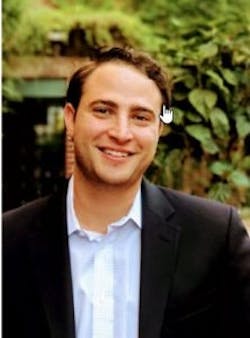Puerto Rico Wastes No Time Drafting Rules to Encourage Microgrid Development
Some believe Puerto Rico’s crushed power grid will emerge as a phoenix, out of the ashes becoming a global model for microgrid development.
It’s hard to say yet if that will happen. But draft microgrid rules released last week by the Puerto Rico Energy Commission signal the island could be on the right track.
First, note their speed of arrival, an indicator of Puerto Rico’s seriousness in developing microgrids. A little over a month after Hurricane Maria’s devastating September landfall, the commission said it would open a proceeding on electric grid restoration and on November 10 solicited comments on microgrids.
Despite the fact that about half the island remains without power, the commission was able to issue a draft decision by January 3. This is a light-speed pace for a U.S. energy regulatory body, even under good circumstances. Often energy proceedings extend for many months or even years before even a preliminary decision is reached.
“What an impressive job for them to just turn it around,” said Jared Leader, senior associate at the Smart Electric Power Alliance (SEPA). “It’s clear from this proposed rule that microgrids really do have a future in Puerto Rico.”
SEPA has been closely involved in restoration efforts following the hurricane. The organization advised on “Build Back Better: Reimagining and Strengthening the Power Grid of Puerto Rico.” The report formed the basis of a recommendation by New York and Puerto Rico for $1 billion in federal funding for microgrid development on the island.
Another factor foretelling a strong microgrid market for Puerto Rico is the tremendous interest the industry is showing in the island. The commission received 53 sets of comments from different parties, among them AES, NRG Energy, Schneider Electric, and the Solar Energy Industries Association.
Microgrid development already underway
In addition, note the microgrid development already underway. Several companies and organization have begun installing microgrids, some as quick measures to restore the island’s power; others with a more long-term view. They include sonnen, Tesla, the Distributed Wind Energy Association and the US Army Corp of Engineers. Sunrun is building a solar plus storage microgrid at the Barrio Obrero fire station in San Juan. Others like New York State and AES are offering to help with extensive microgrid and mini-grid plans.
Jared Leader, SEPA
Last, note the focus and depth of thinking about microgrids that went into the draft. The commission clearly defined the kind of microgrids it wants on the island: renewable, combined heat and power, or a hybrid of the two. Diesel use is allowed, but limited.
Leader sees the guidelines helping other commissions nationwide as they contemplate microgrid policy. “Not just in Puerto Rico, but for anyone considering a microgrid, there is a good set of definitions,” Leader said.
The proposed rules allow for a broad range of ownership: Individuals, partnerships, customer cooperatives, municipalities (alone or groups), non-profits, for-profits, government entities, and the island’s utility PREPA. Other ownership models also would be considered pending commission review.
In recognition that not all microgrids are the same – in fact they can be quite different – the commission categorized them based on size, ownership, and whether or not they self-supply. Rules are ascribed to each category.
The commission said that it “intends to provide a stable and predictable regulatory framework, capable of fostering innovation and economic growth through continued investments in the development and deployment of microgrid systems.”
Interested parties now have 30 days to comment.
Join energy leaders at Microgrid 2018 for discussion about Puerto Rico’s future.
About the Author
Elisa Wood
Editor-in-Chief
Elisa Wood is the editor and founder of EnergyChangemakers.com. She is co-founder and former editor of Microgrid Knowledge.
